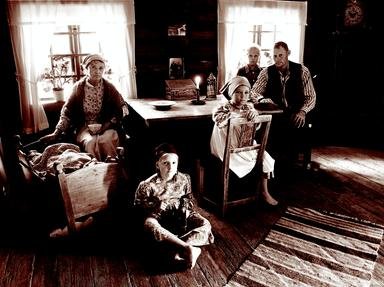Quiz Answer Key and Fun Facts
1. In San Francisco the preferred mode of transportation from 1870 to about 1900 was the cable car. The cars ran by a cable slot between the rail tracks. Who invented the cable car in 1873?
2. They were known as the "Haymarket Eight". Eight men at a rally of anarchists and labor activists at Haymarket Square were arrested after a bomb was tossed toward riot police, killing seven police officers and injuring sixty others. In which American city did this incident occur?
3. Who was the world-famous photographer who photographed the Old West, particularly the Wyoming Territory, for what was to become the U.S. Geological Survey in the 1870s and 1880s?
4. On September 16, 1893, the largest land rush in history began with more than 100,000 people ready to stake their claim to western lands once occupied by Native Americans. To what future state were they rushing?
5. On August 2, 1886, while playing poker in Nuttal and Mann's Saloon in the mining town of Deadwood, Dakota Territory, James Butler "Wild Bill" Hickok met his maker. The cards he was holding have been forever known as the "dead man's hand". What cards was Wild Bill holding?
6. There's gold in them thar hills! In the late 1850s and early 1860s Montana had its own gold rush. Prospectors came from miles around, even Europe. Their arrival gave rise to mining towns that were lawless and wild. One of the first of these settlements became the territorial capital of Montana in 1864. What was the name of the town?
7. At the time, it was the longest and tallest suspension bridge in the world. The Brooklyn Bridge spanned the East River connecting Brooklyn with Manhattan. Until then Brooklyn and New York City were considered two different cities. Who designed the bridge?
8. He has been called an "empire builder" and the "greatest constructive genius of the Northwest". He was President of the St. Paul, Minnesota & Manitoba Railway Company. His vision was instrumental in the expansion of the Pacific Northwest. Who was this visionary?
9. The massive bronze statue atop the U.S. Capitol dome has often been misidentified as being a Native American. In fact it is a female figure designed by Thomas Crawford and completed in 1863. What is the statue called?
10. Dedicated and opened to the public on June 26, 1870, it was the first of its kind in America. The idea for its construction came from a railroad conductor. The first section was only 10 feet long, then a mile long, and today it is 6 miles long, the longest of its kind in the world. What is it?
Source: Author
ncterp
This quiz was reviewed by FunTrivia editor
ponycargirl before going online.
Any errors found in FunTrivia content are routinely corrected through our feedback system.
